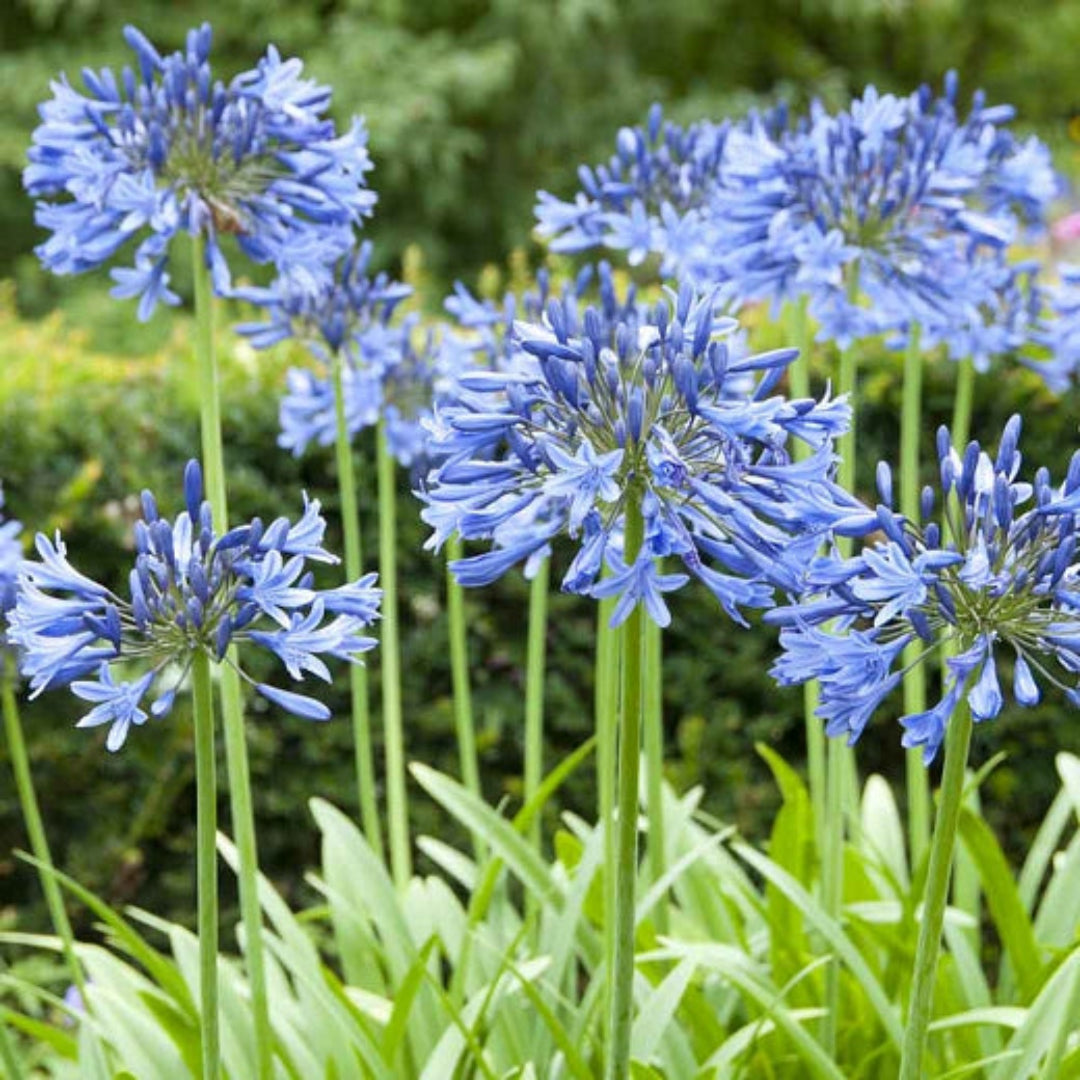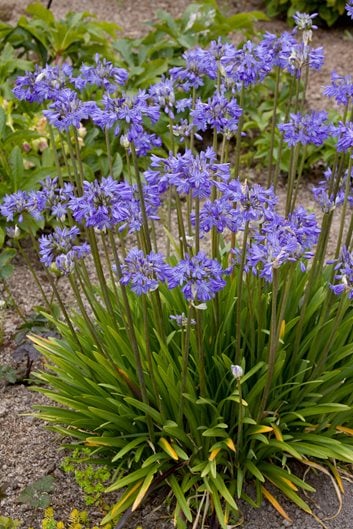Spectacular Agapanthus: Enhancing Your Garden's Beauty
Spectacular Agapanthus: Enhancing Your Garden's Beauty
Blog Article
Letting Loose the Secret to Effective Agapanthus Farming: Idea for a Flourishing Yard
In the world of gardening, growing agapanthus successfully needs a strategic technique that incorporates different aspects of plant treatment. By recognizing the nuances of agapanthus growing, one can develop an environment where these plants grow and flower abundantly.
Growing Agapanthus: Best Practices
When planting Agapanthus, correct dirt preparation is vital for ensuring effective growth and advancement of these attractive flowers. Agapanthus, typically understood as Lily of the Nile or African lily, grows in well-draining soil with a somewhat acidic to neutral pH degree - Agapanthus. Before planting, it is important to modify hefty clay soils with raw material such as compost or peat moss to enhance water drainage and offer crucial nutrients for the plants
To grow Agapanthus, choose a place that obtains complete sunshine to partial color, as this will certainly advertise healthy and balanced growth and plentiful blooming. Dig a hole two times the size of the plant's root sphere and put the Agapanthus at the very same depth it was previously growing. Carefully backfill the opening with dirt, weighing down firmly to get rid of any kind of air pockets around the roots.
Water the newly planted Agapanthus completely and continue to keep the dirt evenly moist, especially during the plant's active growing season. Agapanthus. Using a balanced fertilizer once a month can further sustain the plant's development and blooming. By adhering to these ideal techniques for planting Agapanthus, you can produce a spectacular screen of these fascinating flowers in your garden
Ideal Dirt Issues for Agapanthus
For optimal development and growing success of Agapanthus plants, making sure the soil problems are suitable is vital. Agapanthus chooses dirt that is rich in nutrients, so including a balanced plant food during the growing season can advertise healthy and balanced growth and lively blooms.

Watering and Fertilizing Tips
To guarantee healthy development and vivid flowers, appropriate watering and fertilizing methods are necessary for successful Agapanthus cultivation. Agapanthus plants profit from normal watering, particularly during the expanding period.
When it comes to fertilizing Agapanthus, a balanced plant food with equivalent parts nitrogen, phosphorus, and potassium can be used in the springtime to promote healthy development and flowering. Slow-release fertilizers are suitable for supplying nutrients gradually page over an extensive duration. Avoid over-fertilizing, as this can bring about extreme vegetation growth at the expense of blossoms.
Furthermore, integrating raw material like compost into the dirt can improve nutrient degrees and enhance dirt structure, helping in the overall health and wellness of the Agapanthus plants. By complying with these watering and fertilizing pointers, gardeners can ensure their Agapanthus plants grow and create stunning screens of flowers.
Trimming and Deadheading Techniques
Correct pruning and deadheading methods play an essential function in maintaining the wellness and aesthetic appeals of Agapanthus plants, enhancing the important techniques of watering and fertilizing for successful farming. Pruning Agapanthus includes getting rid of invested flower heads, dead or yellowing leaves, and general shaping of the plant to advertise better growth. Deadheading, the process of removing faded flowers, not just enhances the plant's look yet also encourages additional growing.
When deadheading Agapanthus, it is advisable to clip off Read Full Report the blossom stem at the base making use of sharp, tidy shears. This process redirects the plant's energy from seed manufacturing back into origin and foliage development, advertising a much healthier and more robust plant. Routine deadheading can expand the flowering period of Agapanthus and stop self-seeding, which can bring about congestion.
In regards to pruning, Agapanthus normally advantages from a light trim after blossoming to tidy up the plant and urge fresh development. Cutting down the spent flower stems and removing any type of broken or dead foliage helps preserve the plant's vigor and overall look. Nonetheless, it is important to prevent cutting into the crown of the plant, as this can compromise its health and wellness.

Protecting Agapanthus From Pests and Diseases
Executing effective pest and condition monitoring strategies is essential to safeguarding the wellness and vitality of Agapanthus plants in cultivation. Agapanthus are generally durable plants, however they can still succumb numerous parasites and illness if not appropriately cared for. One usual bug that affects Agapanthus is the Agapanthus borer, a caterpillar that passages into the plant, creating damages to the fallen leaves and blossoms. To avoid problems, routine assessment of the plants is essential. If borers are identified, they can be by hand eliminated, or insecticidal soap can be used as a control procedure.
In enhancement to parasites, Agapanthus are susceptible to diseases such as origin rot and fungal fallen leave places. By remaining vigilant and resolving parasite and condition concerns quickly, gardeners can help their Agapanthus flourish and grow.

Conclusion
Finally, successful cultivation of agapanthus calls for appropriate planting techniques, ideal soil problems, adequate watering and feeding, routine pruning and deadheading, and defense from insects and diseases. By adhering to these techniques and tips, gardeners can make certain a growing garden full of gorgeous agapanthus blooms. Agapanthus. Bear in check my reference mind to keep regular care and interest to information to promote the wellness and longevity of these magnificent plants
When planting Agapanthus, proper dirt prep work is important for making sure effective development and development of these gorgeous blossoms.Water the freshly grown Agapanthus thoroughly and proceed to maintain the dirt equally moist, especially during the plant's energetic expanding season.For optimum growth and flowering success of Agapanthus plants, making certain the soil conditions are suitable is essential. When hair transplanting or growing Agapanthus, make sure the dirt is well-prepared to offer the needed structure for the plants to develop themselves successfully. One typical bug that influences Agapanthus is the Agapanthus borer, a caterpillar that tunnels into the plant, triggering damage to the leaves and blossoms.
Report this page